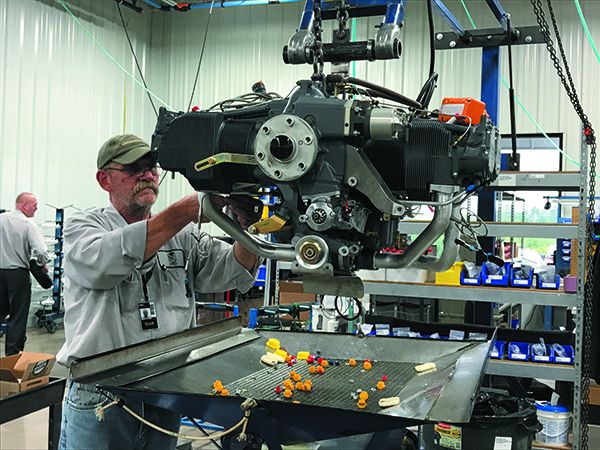You knew the day would come—but not this soon. Blindsided during a call from the shop doing the annual inspection, you hear only every other sentence as the tech tells you it’s time to cough up $30,000 (or a lot more) for an engine overhaul. The news is never easy to swallow, but it’s less painful if you already had a plan in place—and of course the money saved to pay for it. Plan it out now so you can get the bird back in the air as quickly and efficiently as possible.
BAD DAYS
There are many reasons why an engine may need an unexpected teardown/overhaul. And clearly the factory recommends a teardown when the prop is bent or even damaged bad enough to need a blade removed for repair or replacement. While the engine is torn down, when should you just go ahead and overhaul it while it’s all apart? Will you go with PMA replacement parts or OEM parts? Important decisions.
Start with a checklist and fairly detailed ideas of what you want when the time comes. This includes a factory reman, a factory overhauled engine, a field overhaul, engine part upgrades and also where to go for the work, although you might not have much choice if the overhaul is unexpected—especially if the plane is grounded away from home. Doing the legwork now will be much easier than if you have to start from scratch under pressure. When the time comes you might only have to adjust for downtime and availability.
Where to get the work done is somewhat of a variable. You can source the overhaul from the factory or a handful of engine shop repair stations that have been in business for decades after building a respected reputation (which you will pay and wait for). If you have a factory reman in mind, what is the premium over a repair station, versus the shop on the field doing a service limits overhaul? What about warranty? What about a new engine? Then there’s grunt work.
The local shop can do the engine removal and installation, or you can make other arrangements—that includes applying for a ferry permit to get the airplane where you want it, if it’s even possible. Then there are accessories. If you don’t know how to order your own hoses if they are more than a few years old, plan on the extra profit for the shop getting them for you, and they may not even be what is the best. There are more choices than you think. Talk about it ahead of time if you have a trusted shop, and look the engine over during annual with that shop so you know what you have. Take photos.
Accessories should also be overhauled when the engine is overhauled, even after a prop strike. The event is also a chance to change magneto brands (in many cases) if you have had problems with those you currently have. You may also want to go with custom fuel injectors or a factory remanufactured injection system or overhauled carb. There are lots of choices to make and these choices are best not made under the pressure to get the engine fixed. The best outcomes are from research and considerations made ahead of time.
START PRICE-SHOPPING
Get a feel for what specific stuff costs. A shop might not go out of its way to tell you of options if it has a parts room full of older serviceable parts. If you don’t have some ideas on prices, you will be scrambling to find out what is and is not a good price, or what typically is included in the cost of the overhaul. Don’t underestimate the accessories, which can literally add thousands of bucks to the cost.
The takeaway: If you wait until you are under the gun and you really have no idea where to go or what prices to expect, you could find yourself spending a lot more than if you had a plan in place. Taking pot luck with an unknown or limited amount of knowledge leaves you at a huge disadvantage, compared to having a well-thought-out written plan.
In the meantime, we’re working on an updated engine shop satisfaction survey for an upcoming report.





